Can an English Mastiff Kill a Wolf? Calculating the Chances
Originally bred to be a fighter, the English Mastiff can stand a chance against many predators, that of which includes the canny wolf. His win is guaranteed if he gets to have several other English Mastiffs with him, outnumbering the said opponent.


For decades or even perhaps centuries, the English Mastiff earned its reputation as a skilled warrior who fought alongside several notable individuals like Kublai Khan and Julius Caesar. His massive size and his natural aggression proved fatal for anyone who dared to challenge his capacity to impair.
To learn more about the English Mastiff vs wolf fight, this article will cover all possible areas in knowing which between them can win it. Several questions will be answered and you will be enlightened as to how strong these two animals are. Keep reading!
Table of Contents
Are English Mastiffs and Wolves Related to Each Other?
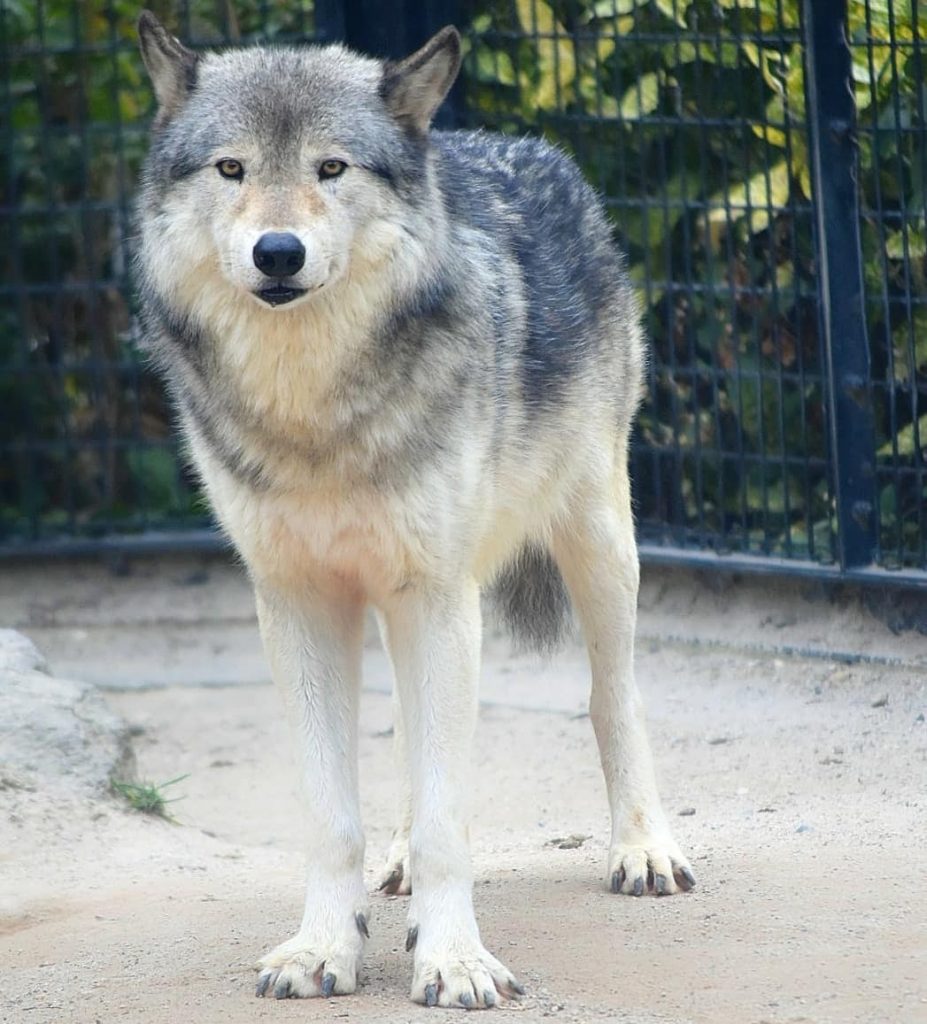

Yes, wolves, particularly the grey wolves, are believed to be the ancestor of all dogs we presently have, including the English Mastiff. The varieties we see, no matter how little in common they have with each other such as the Toy Poodle and the Great Dane, are connected to one progenitor only.
The different types of dogs emerged after years or decades of selective breeding. Such can be labeled as artificial evolution since humans controlled how dogs will be bred or developed either in looks or temperament.
Additionally, wolves and dogs such as the English Mastiff can produce viable offspring. The success of this interbreeding made scientists conclude that these two species are of the same genus since only two organisms of the same type can reproduce. The DNA analysis cannot exactly determine the wolf from a dog or a wolfdog hybrid due to how closely related they all are. Despite that, wolves are not considered as dogs nor are dogs considered as wolves.
English Mastiff vs Wolf Appearance
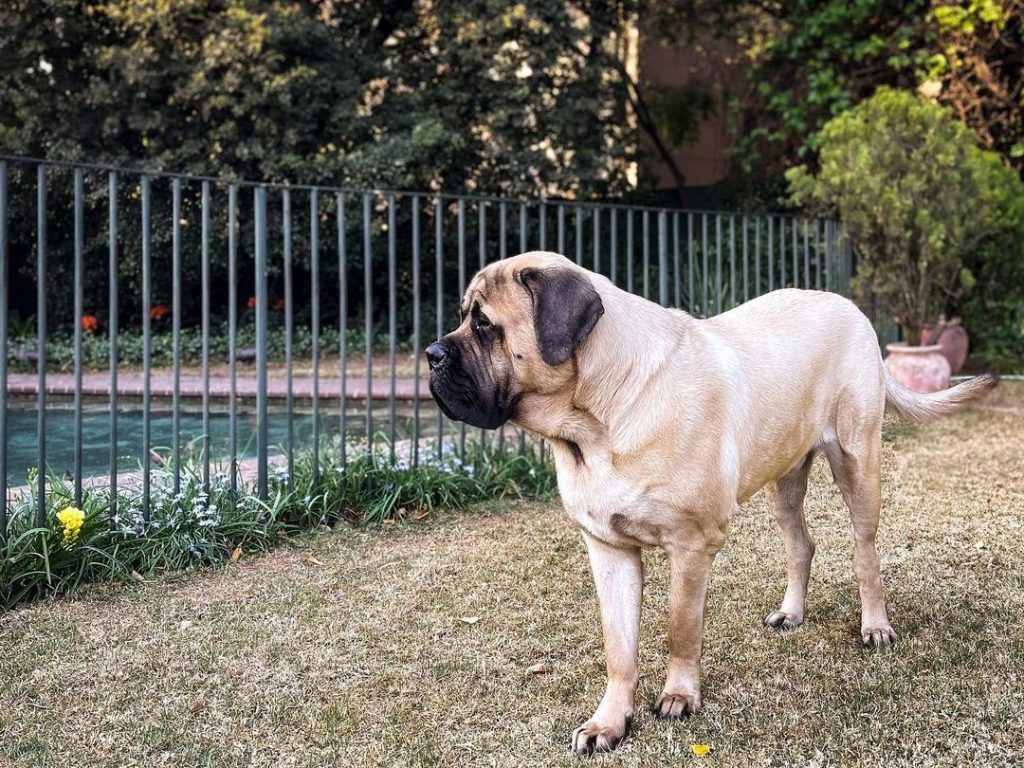

There is a stark difference regarding the appearance of the English Mastiff and the wolf. The most obvious feature that can help us distinguish one from another is the head. The English Mastiff has it broad and heavy with a few wrinkles present. His muzzle is short and his jowls hang loosely on the sides. A black mask covers most of his face and the same shade can be seen on both his medium-sized ears.
Ideally, his coat is short and straight with an undercoat that is shorter and dense. He can sport it in three different colors which are fawn, brindle, and apricot. At first glance, you’d instantly notice how bulky and muscular he is. In his best state, his stomach should be narrowing and not bulging. He can weigh up to 230 pounds and the height starts from 27.5 inches up.
Meanwhile, the wolf has a more recognizable appearance. He has a slender face shape with a pointy snout. His eyes range from yellow to amber and even green. People describe the wolf’s looks as beautiful yet mysteriously intimidating.
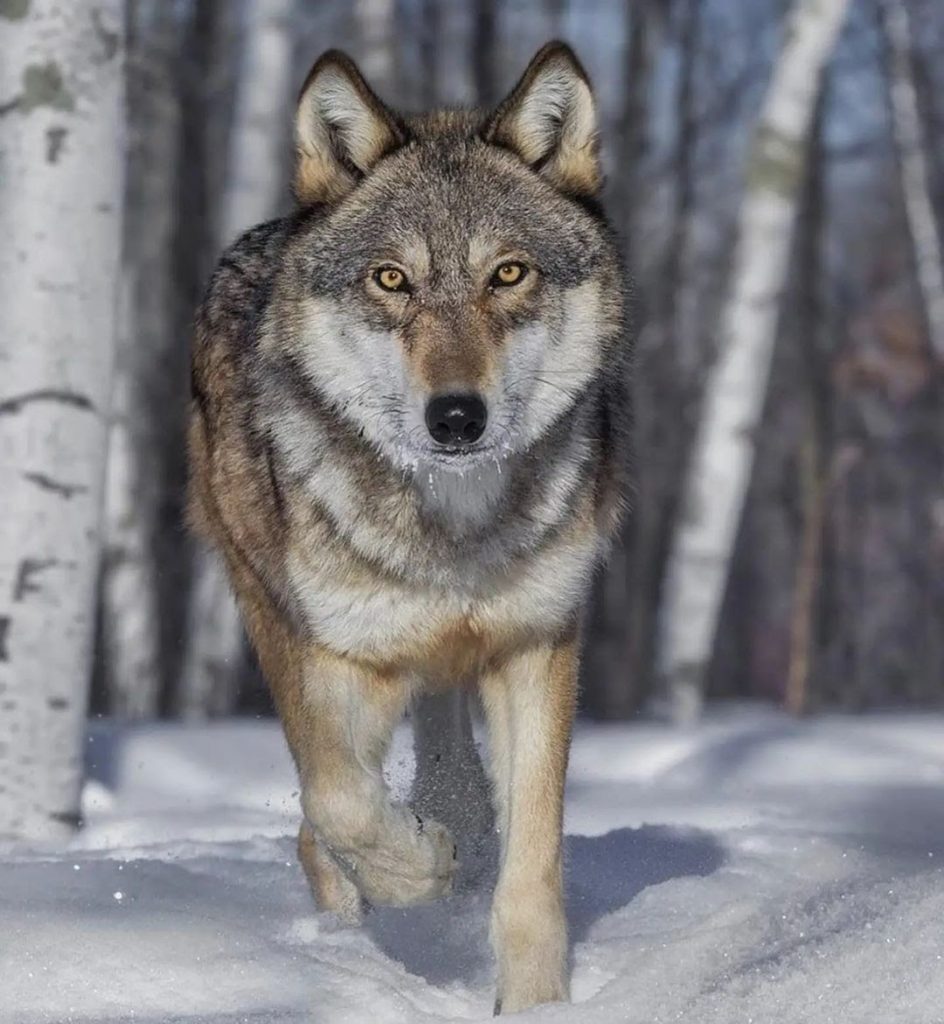

His coat is usually thicker and longer than the Mastiff. Usually, he can be brown, white, or gray. His body can be characterized as athletic, strong, and fast, capable of thriving in whatever climate he’s in. The tail is slightly fluffy and it is one of the indicators of his mood.
His legs can’t be ignored. They all are long, making him competent at taking lengthy steps or running at a greater speed. This makes him very efficient in hunting, but yet again, their hunting success rate is low due to how their prey evolved with them. Averagely, wolves are 34 inches tall and 175 pounds heavy. These may change depending on the breed.
English Mastiff vs Wolf Temperament
How English Mastiffs and wolves socialize is different. While our four-legged buddies like to spend time with their owners and asking for affection, the wolves seem to be too independent and not too fond of that idea.
Generally, once a puppy gets to our home, we are immediately considered as its family after just a short period. As for the wolves, they also are into sticking with their units, but never would they have the same outlook toward humans as it is with the English Mastiff. Wolves prefer to stay with their packs. Any strangers are deemed unacceptable and threatening.
It is worth noting as well, that the kind of environments these two different creatures are expected to live in has prompted them to develop at their rate. Puppies take four weeks before they can open their eyes to socialize while wolf pups only take two weeks. Dogs can give birth any time of the year while mother wolves give birth during springtime so the pups can have time to be strong before facing the harsh winter.
Fighting Strength
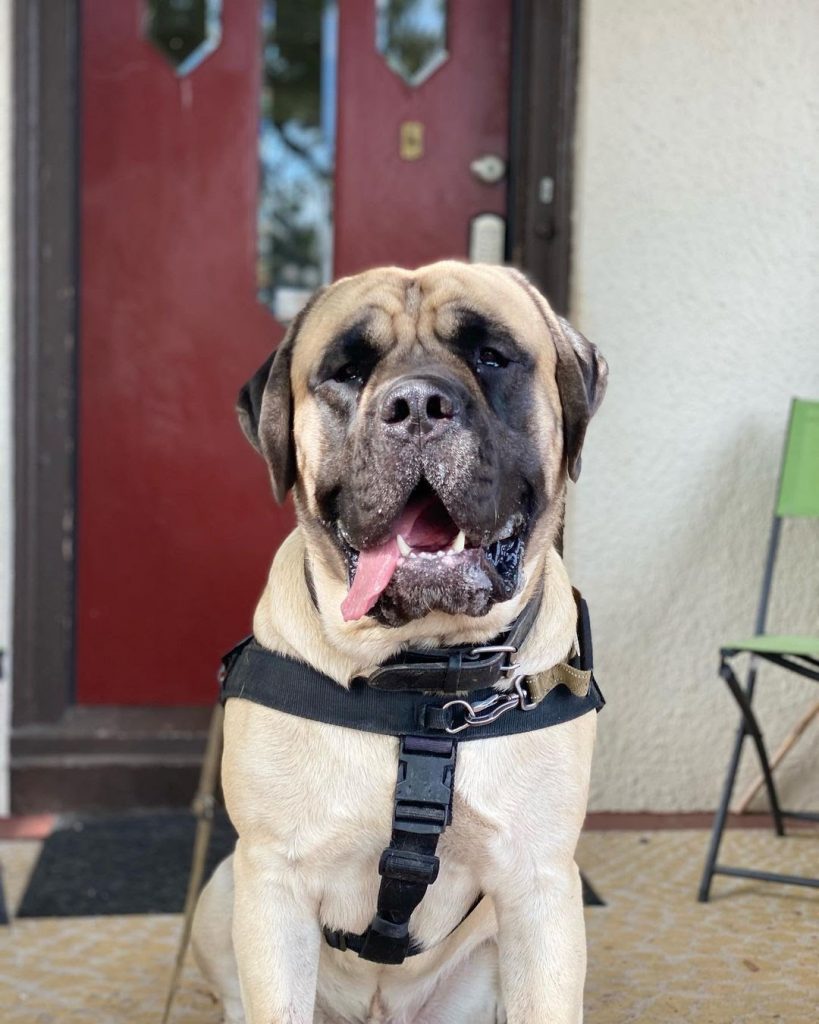

It is true that the English Mastiff has had a very bloody history as a fighter. However, due to years of developing this breed, this Mastiff turned out to be a more mellow version temperament-wise. The aggression is almost asleep in this breed and it only shows when needed. He is mostly gentle, loving, and behaved. His body changed drastically too with a few pounds visibly added to his weight.
He can still fight, no doubt, especially when somebody trespasses his territory or his family’s safety is at stake. He has a biting force of 550 PSI, enough to cause severe damage. If he’s at a healthy weight, he would be able to move faster and maneuver his body in different directions without any problem.
However, the wolf is not something you can underestimate. On average, his biting force is 400 PSI, but a threatened adult wolf can have a bite that can reach up to 1,200 PSI. He can easily sink his teeth into a moose femur in only 6 to eight bites of more or less the same force.
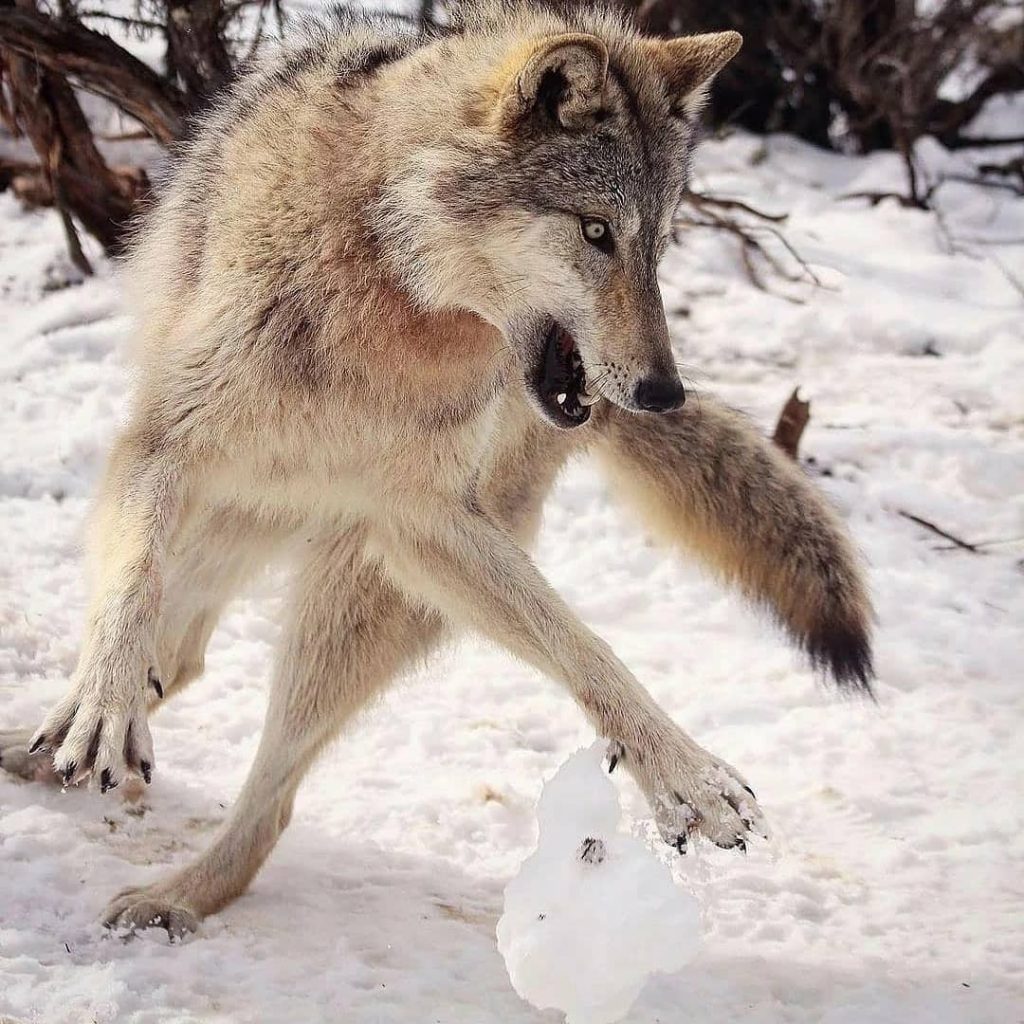

His wild nature remains consistent and unaltered since he can be found in the same kind of environment. His lifestyle continuously involves constant hunting for quarries to feed himself or his family. In other words, the wolf is practiced more in fighting other random creatures compared to the domesticated English Mastiff. Still, the English Mastiff’s prey drive can be sparked by the presence of a smaller animal.
When Is an English Mastiff at Risk of Getting Attacked by a Wolf?
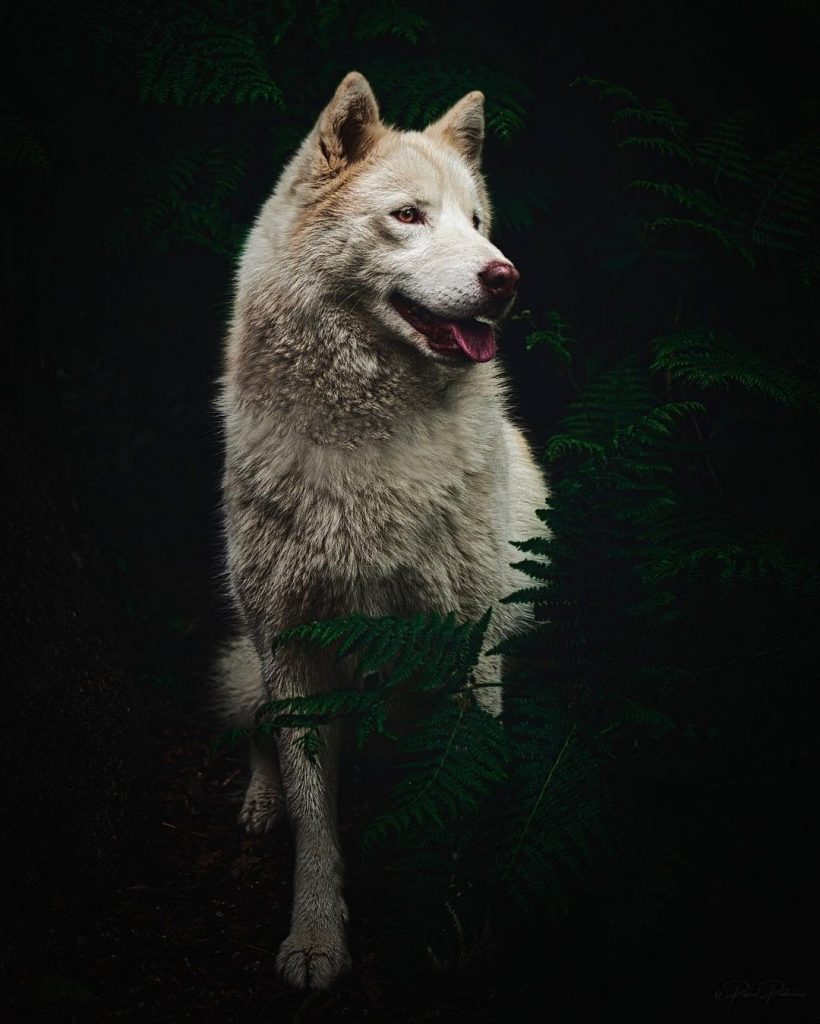

There are some possible events when an English Mastiff gets to be at high risk of a wolf attack. If he’s often brought outside as a guardian of your flocks or a companion for your activities, a Mastiff and a wolf encounter are highly likely going to happen.
When Used as a Livestock Guardian
The English Mastiff is very vulnerable to wolf attacks if he’s used as the protector of your livestock. Wolves are deemed to be predators and they are attracted by the sight of a herd as they perceive them as their potential meals.
No matter how many trained canines you set up as guards for your farm, wolves, especially the hungry ones, can outsmart them.
Used as a Hunting Companion
During hunting, you and the English Mastiff can end up in wolf territory. It can result badly when the wolves in the area have pups or food sources to protect. These creatures highly value their dens and prized meats and any sight of unfamiliar animals like your dog will not be taken lightly.
With the size of the English Mastiff, the wolves will easily find him threatening the moment he crosses enemy lines.
Used as a Hiking Buddy
Hiking or camping in unfamiliar areas must be avoided. You never know if a wolf or a group of wolves are residing near your position. Remote wilderness, swamps, coastal prairies, and forests are their common habitats. It is best to avoid places where several wolves may potentially live. If you are unsure if other animals live nearby, never leave food out in the open as this can attract uninvited guests.
Make sure you monitor your English Mastiff as well. You’d need each other, especially when the situation calls for it.
How Can I Keep My English Mastiff Safe From Wolves?


If you love doing activities outside with your English Mastiff, know that there are possible dangers you both could meet. To ensure safety, a few precautionary measures must be instilled in mind to prevent any unwanted events from happening.
- Refrain from using your English Mastiff as a livestock guardian and use other alternatives.
- When hunting, use baits that won’t attract wolves or other dangerous animals like bears.
- If possible, use other hunting areas where there is no presence of wolves.
- Never leave your English Mastiff unattended outside during camping.
- Carry a noisemaker with you in case you and your dog meet a wolf. This will most likely be enough to scare him away.
- Make sure your garbage cans have their lids on so the wolves can’t scavenge on the bins.
- To keep the boundaries clear, never feed wolves. Attempting to do so is a slow step of encouraging them to lose their fear of people.
Other Mastiff Breeds That Can Take On a Wolf
It is not just the English Mastiff that can take down a wolf. Other massive dog breeds from the Mastiff family can surely win the fight against the mystic wild wolf. As long as all these Mastiffs are healthy and are in the right number, the odds will be in their favor.
- Tibetan Mastiff
- Cane Corso
- Argentinian Mastiff
- Rottweiler
- Boerboel
- Presa Canario
English Mastiff vs Wolf: Who Would Win the Fight?
There are lots of factors that can come into play before we’d be able to determine who exactly is stronger between the English Mastiff and the Wolf. Size-wise, the Mastiff has the edge. He can effortlessly pin the wolf to the ground once he gets a grip of him. However, in terms of speed and agility, hands down, the wolf gets the advantage. His build enables him to outmatch the Mastiff in these areas.
Nevertheless, age, health, and experience can also affect the outcome. Either one of them could win the fight as both animals are inherently dangerous given that they are all equipped with sharp claws and fangs. One thing is also clear, whoever is more desperate to survive, will surely have the more motivation to secure the victory.
